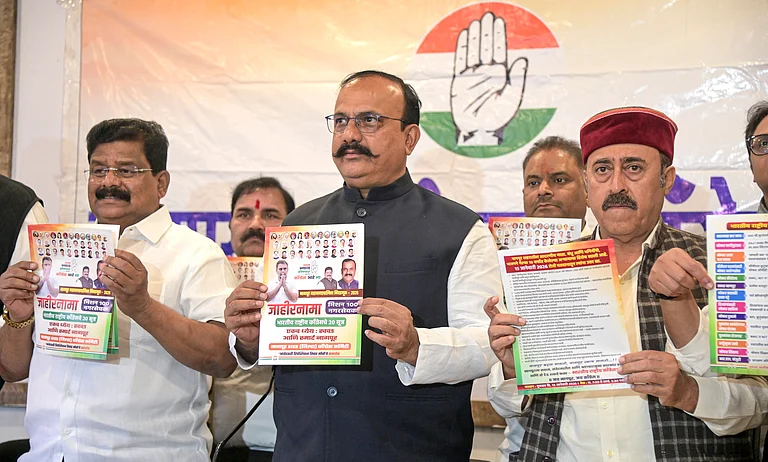Yes, I characterise my fascination for Shurpanakha as arising out of many meetings with her. Every time I listened to stories of her or watched her on the television in the hugely popular series by Ramanand Sagar, it felt like meeting someone I needed to know. Unlike Sita, who was pure, ideal, and unreal, Shurpanakha’s rawness made her a more attractive character.
I first met Shurpanakha when I was around eight-years-old in a story my dad, the storyteller of the family, told me. Although he stuck to the mainstream narrative of a well-deserved punishment, I could detect a tremor in his voice when speaking of the chopping of the nose and left ear. I latched on to that quiver that lurked in my subconscious only to surface whenever I heard of atrocities against women, each time with more outrage than before.
Strangely, I next met Shurpanakha in my undergraduate days as an English Honours student in Bombay in the late 1970s. The poem To his Coy Mistress by Andrew Marvell was on the syllabus. The poet’s impatience with his mistress’s coyness, at once brought Shurpanakha to mind. Centuries before Marvell’s mistress, there was this brave woman who did not shy away from expressing desire and had to pay a heavy price for it.
Yet, coyness was subjected to scrutiny and dismissal in Marvell’s famous poem with the carpe diem theme. Either way, women were constantly judged, evaluated, and dealt with accordingly by the more powerful of the species. Unable to formulate my thoughts coherently and articulate them, they just floated in my head for many years.
ALSO READ: आई लव यू सूपनखा
Time went by. As a young woman in my late 20s, I heard the Ramayana from my mother-in-law as she narrated it to my sons. Through the chores, I kept my ears fixed on her voice. In the television version, Shurpanakha was made out to be an ugly and grotesque woman, with evil in her eyes. But my mother-in-law said, “You know, Shurpanakha was a beautiful woman. She was proud of her beauty too. Her name was Meenakshi. She had magical powers like all those from the kingdom of the rakshasas. She could even change form.”
Coming as she did from Tamil Nadu, my mother-in-law knew her Ramayana from the poet Kamban. This meeting with Shurpanakha thus turned into an entry point into the multiplicity of the epic.
Decades passed. This beautiful, intelligent, and enigmatic woman would appear and disappear before me as magically as her supposed powers. To hone my nascent skills in painting, I joined a beginner’s course at an art center in my adopted city of Baroda in Gujarat. The course included sculpture. When the teacher said, “Tomorrow we will begin with sculpture, think about a subject”, I straightaway said “Shurpanakha”. Rather uncanny!
As the clay was pummeled, rolled, and made into a dough with my hands, everything around me vanished. I travelled into a forest where a bold, defiant woman, unafraid to openly express desire, was being heckled, shunted from one to another, until finally to be deformed. The woman with her nose in the air, so to speak, had to be taught a lesson by chopping that precise part that she would then no longer hold up in the air. That sword, with its brute, phallic force took away a part of the ear as well.
Even before I had learned to sculpt a perfect form, which is the goal of a sculptor, I was struggling to sculpt a deformed face. In a way, it freed me from the compulsion to attain perfection. I fashioned a rose and stuck it behind her right ear to symbolize her pride in her beauty. It was also a way of upholding my mother-in-law’s version. The perfect rose stood out as an ironic contrast to the deformity of Shurpanakha. I then began to focus on expression. I was clear that I wanted a startled look in my Shurpanakha’s eyes, a look that exclaimed, “But why? What have I done?”— the first question that rings loud and clear in the head of every woman when she is punished by the laws of patriarchy.
(Gita Viswanath is a writer. She has authored four books — two novels, Twice it Happened (2019) and A Journey Gone Wrong (2022); a non-fiction book, The 'Nation' in War: A Study of Military Literature and Hindi War Cinema (2014); and a children's book, Chidiya. Her poems, essays and short stories have been published in several print and online journals. Her short films Family Across the Atlantic and Safezonerz are available on YouTube. She is also the co-founder of online film club Talking Films Online.)






















